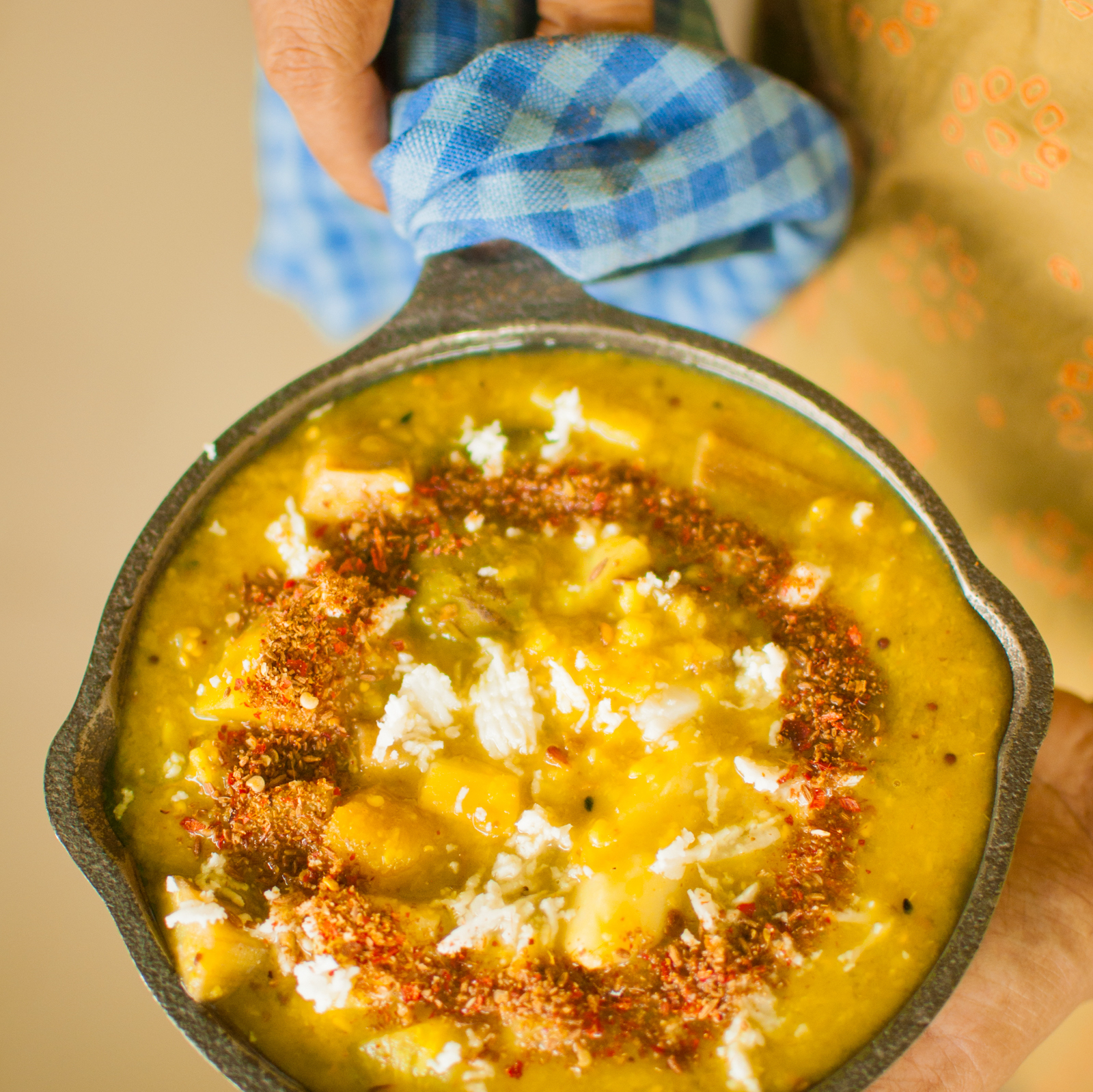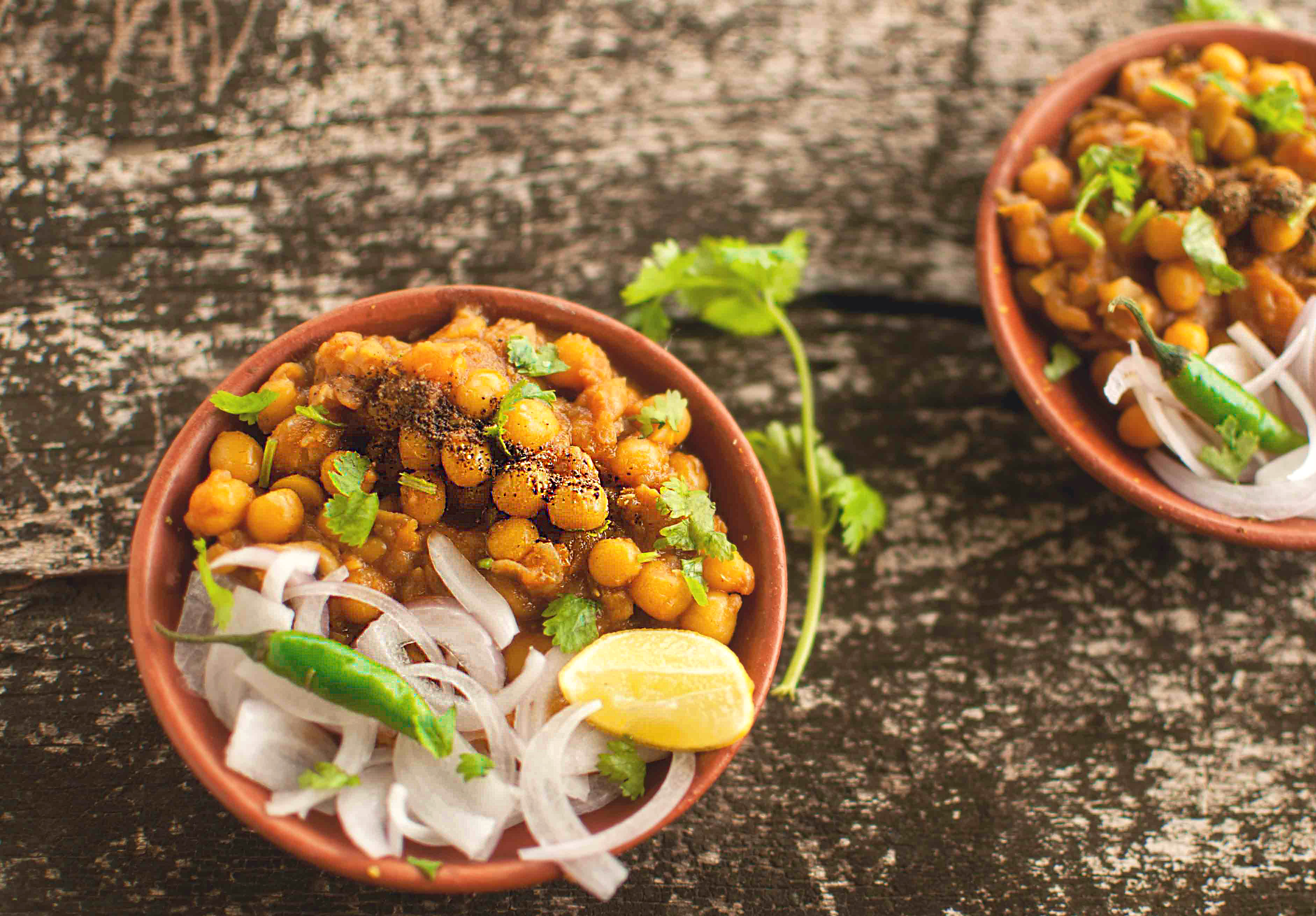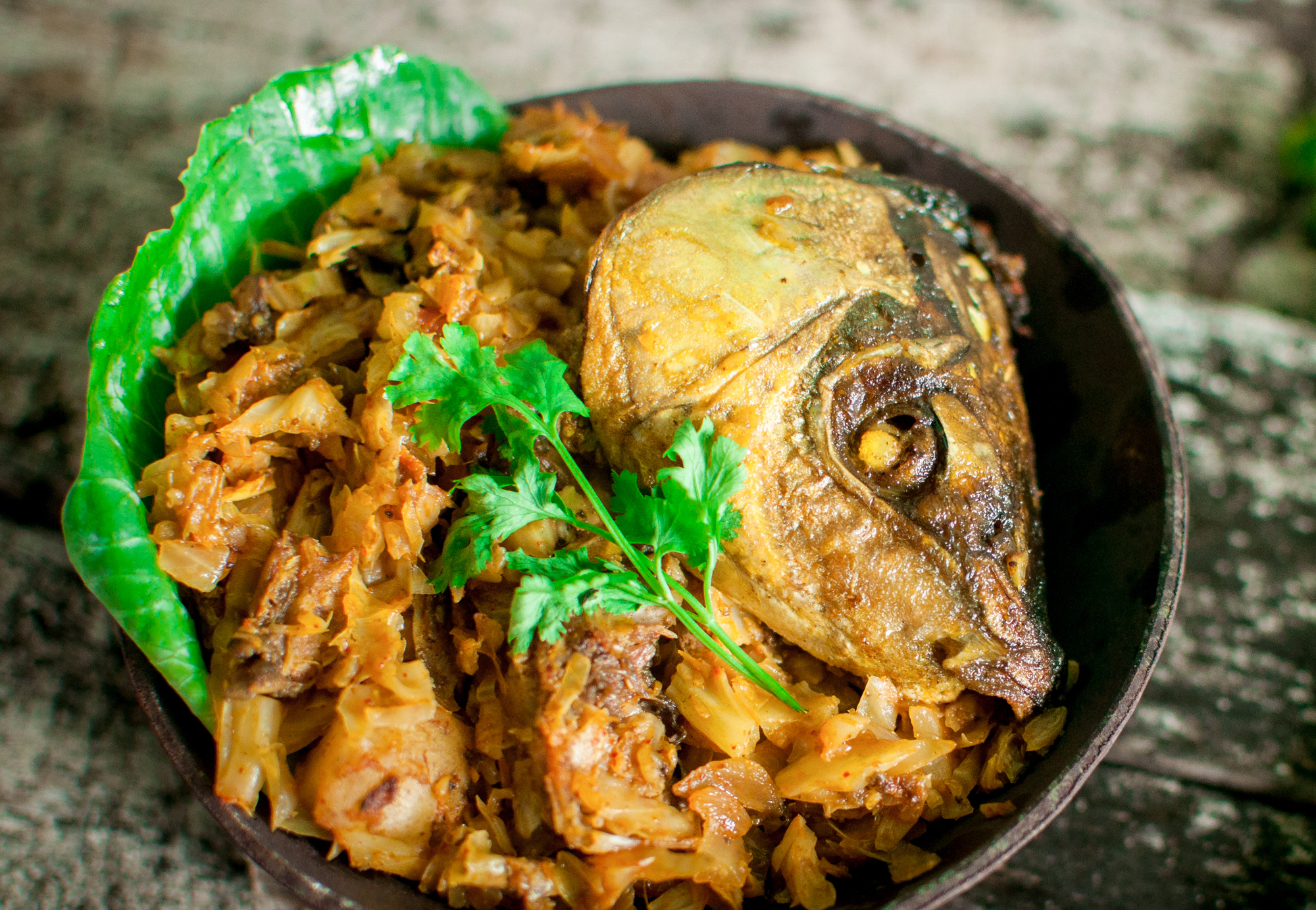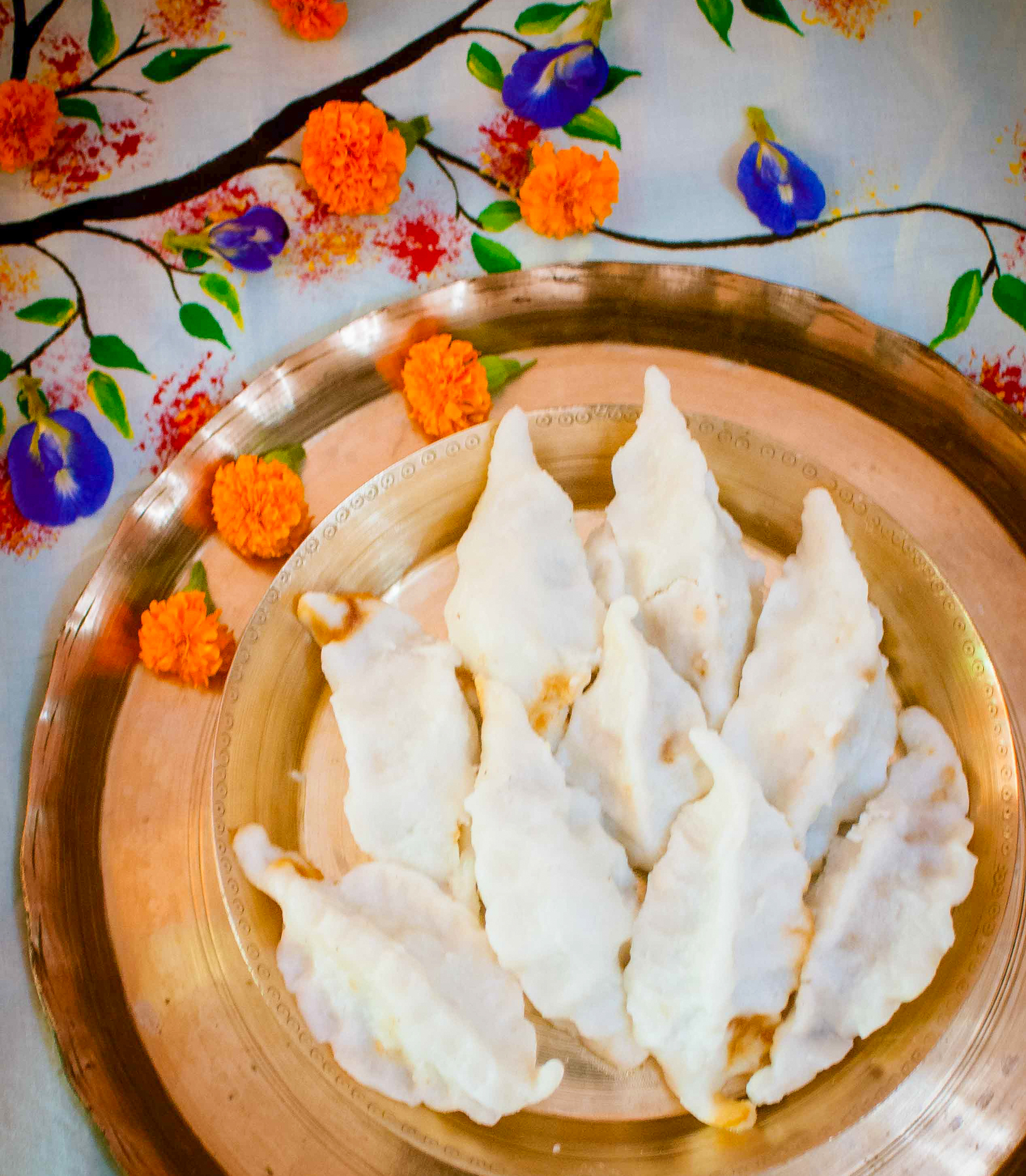Dalma Ghuguni Machha Munda Chhenchda Odia Pithas Pakhala
Dalma, the lentil-stew from Odisha

Odia Cuisine is known for its flavorful curries using minimal spices. Taste combinations are unlike anything found elsewhere around the world. In fact, the varieties are just countless.
Dalma, the most popular vegetarian dish from Odisha is always a part of authenticate Odia Thali (plate with a complete meal). Not only Thali, people relish this high-protein delicacy with almost everything starting from breakfast to dinner. Dalma-chakuli, Dalma-rice, Dalma-pitha are few combinations to name.
The Temple City Bhubaneswar, better known for the architectural splendors of its ancient temples and monuments. People here follow many festivals and Rituals throughout the year. In fact in a week they have specific days to take only vegetarian food. So Dalma is a regular affair in every house here. And why not! The cooking process is so easy that anyone can make it. Another factor is freedom to modify the recipe. The cook has always the freedom to choose the vegetables of her/his choice.
The main ingredient in it is "lentil". You can say it's a kind of slow cooked lentil-stew and you can also treat it as a lentil soup in winter. Boil few vegetables together with lentils and give a tadka with clarified ghee and Dalma is ready. The dish can be prepared with varieties of lentils like "Toor Dal" or "Moong Dal". Vegetables like foot yam, egg-plant, pumpkin, raw-banana, colocassia and pointed gourd are added to it. At last, scrapped coconut can be sprinkled on top for an added flavor.
The use of spices are very minimal. Cumin seed, bay-leaf and cinnamon are added to it. The secret of making a delicious Dalma is making the perfect 'tadka' with ghee.
Dalma, the soul food of every Odia is nothing but a simple delicious dish with high protein. Combine with rice, that will be most comforting lunch on a day when you don’t want to have non-veg. This lentil vegetable stew has almost no-oil. So undoubtedly it falls in the healthy category.
The use of garlic and onion is strictly forbidden in temples of India. The temple food is Satvik which is offered to Gods/Goddesses and Dalma is also a part of temple food in Odisha.
There is another kind of Dalma which is known as 'Habisha Dalma'. The month of Kartik, being the holiest one, is very significant among Odias. Generally people give-up non-vegetarian food during this month, which usually occurs in between October and November as per the English calendar. In this period you can get this special kind of Dalma in Temples called 'Habisha Dalma'. The ritual called 'Habisha' which is primarily observed by widows in Odisha. They use to follow some restrictions during this period eating once in a day.
Habisha Dalma is prepared without turmeric powder and moong-dal without roasting the lentil. Also choice of vegetables for this special preparation is very limited like Elephant Apple, Raw Banana etc. As you can't add chilli, usually black-paper is added to get that twist.
Where to eat
If you are visiting Bhubaneswar, never miss to taste this heavenly dish. You will find it at every restaurant for sure. You can try it at Pantha-Nivas, run by OTDC or other food joints.
Ghuguni

A versatile dish which is served in many ways, you can relish ghuguni with hot poori in your breakfast or make a chaat for your evening snack; this will satisfy you in all possible combination.
This dish is also treated as one of the favourite street-foods of Bhubaneswar.
The easiest way to recognize it is a big aluminum handi covered with a lid. Usually it is prepared in a big vessel and served in plates made of dries leaves or "dona". To tickle your taste bud, the chaat wala will squeeze lemon, add chopped onion and green chilies to it. At the end when he will sprinkle a pinch of black-salt to make the aroma a little stronger to make you salivate. This is one of the favorite snacks of Odias staying in the State Capital.
The versality of the dish can be best gauged by the the many ways the same dish can be presented, each with different flavours and textures.
You will get to know your answer when you see those chaat counters on the road-side. Beautifully decorated by grated orange carrot, gated blood-red beet, white coconut and gorgeous green coriander leaves make the ingredient allure the consumers. In evening hours number of these chaat stalls are frequently seen on the food-streets.
Upon being asked, the chaat stalls will serve a portion on a plate. They will add chopped onion, grated carrot and all those colorful stuff. The flavor will be enhanced a level up adding a spoonful of tamarind juice and curd to it. It's not finished yet. In many chaat-stall you will get an option adding a piece or two of dahi-vadas to it. Dahi-vada is another street food of Bhubaneswar which is served with spicy potato curry or aloo-dum.
At the end you will hear a crunch sound when the chaat-wala takes a handful of nimkis smashing on top. Nimkis are crunchy savory deep-fried snack. The delicious Odia style Chaat will be ready to relish in span of few seconds.
You will be hooked to it and will not look anywhere until you finish your plate. You are free to add some more spice mix or chutneys in between. Chaat-wala will never hesitate to crush an extra nimki on your plate.
How Ghuguni is prepared?
Like the other vegetarian dishes in Odia cuisine, the cooking style is very simple. Boiling and sautéing are the two methods involved here. Importantly dried white-peas need to be soaked overnight and then boiled till done. Then sautéed with minimal spices and it's ready to be served.
It's again a favorable combination for dinner at many Odia homes. Usually served with rotis .Some prepare their secret masala blending some roasted cumin-seeds, red-chili etc into a powder. At the end they sprinkle and give that magical touch to this popular local dish.
Where to eat
Being a favourite street food, Ghuguni is served along with all those fritters at snack centers across the city. Baraa-ghuguni, chop-ghuguni, singada-ghuguni are few combinations to name. These combinations are enjoyed by people during breakfast hour as well as during evening hour. There is another popular combination is Chakuli with Gughuni. Chakuli is nothing but a distant cousin of dosa or Indian thick pan-cake. The overnight fermented batter results a fluffy delicious round pan-cake in the morning. It's filling and healthy.
Machha Munda Chhenchda

Odia Cuisine is lauded for its flavorful curries using minimal spices. While the staple food is rice, fish comes as the favourite companion and the combo is liked by the majority. Odisha also takes pride in its wide variety of fish curries. There are many exquisite preparation with fish, i.e. Machha Besara, Machha Mohura, Sorisha-Machha and a few more. From the list of favourites, one of the typical authentic preparations is Machha Munda Chhenchda.
Days like Wednesday, Friday, Saturday and Sunday in a week when people in Bhubaneswar prefer to eat non-vegetarian dishes. One can easily get verities of fishes from the local markets. The most-selling fish is Rohu and Catla. And the fried head of the fish is used to make the "Chhenchda" dish.
It's amazing to see how simple ingredients come together to make a delicious dish like this. Don't miss this for just another fish curry because it's absolutely sensational. The flavour of deep-fried head take this dish to a whole new level.
Chhenchda means something smashed or crunched. The big fish-head is usually deep-fried and then crushed a bit. This is added to a combination of vegetables resulting in a delicious dish called "Chhenchda". Many add lentil to it, and usually roasted moong dal.
Final tadka goes infusing Panch Phutan, cinnamon, red-chili and crushed garlic to the oil. This enhances the flavor a level up.
Panch Phutan is a five-spice tempering mix. It's very easy to make at home. Take equal amount of fennel seeds, fenugreek seeds, mustard seeds, nigella seeds, and cumin seeds. Mix them and it's ready. In every Odia kitchen you will surely find a box of this. Commonly it is used in vegetables, fish curries, dals, and even in pickles.
Fennel is sweet, cumin is earthy, nigella is peppery, mustard is pungent and strong, and fenugreek is slightly bitter - which when combined adds more character to a dish. A simple vegetable stir-fry can become extremely flavorful when roasted Panch-Phutan is added to it.
Adding panch-phutan to Machhachechda is a must and the authentic way of making this flavorful dish.
There is another way of making a fish-head curry using cabbage. In winter, this dish tastes even better when served with hot steamed rice, roasted moong dalma and khata. This will be a soul-satisfying meal for you. Next time you are in Bhubaneswar, never miss to relish "Machha Munda Chhenchda".
Odia Pithas

'Pitha' is a rice-based steam-cake from Odisha. It’s part of "Chhappan Bhoga" that is offered at Puri Jagannath Temple and many other temples in Bhubaneswar.
Bhubaneswar being the abode of hundreds of temple is a place of rituals and festivals. Pithas are a common sight on any of the celebrations. It is a special class of preparation from rice.
Raja festival is an occasion when verities of Pithas are made in Odia homes for three days. It is believed that the mother Earth undergoes menstruation during the festival. The first showers of the monsoon moistening the sun-dried soil, thus makes the Earth ready for productivity.
A few Pithas you should not miss if you are in Bhubaneswar. Odisha Tourism Development Corporation (OTDC) also celebrates the Raja festival and opens a counter at Pantha Nivas, Bhubaneswar where a visitor can purchase Pithas.
Poda Pitha:
Raja festival is colorless without this authentic preparation. An over-night slow cooked preparation from the rice powder, which is traditionally cooked in earthen clay stove with charcoals, the batter is covered with sal-leaves and covered with burnt charcoal. The resulting golden-brown baked Pitha tastes delicious with a hint of smokiness in it. It makes a perfect meal when served with Dalma, another delicacy from Odisha. Poda pitha preparation by the chefs of OTDC becomes a big hit during the Raja festival.
Sijha Manda:
It's a kind of no-oil food and the steamed rice dumplings with delicious core (filling) made of grated coconut, jiggery and cottage cheese, are prepared during every major festival in Odisha. The process is quite easy. Once you get that right technique to make the perfect rice-dough for Pitha, your job will be much easier for Sijha Manda. Sijha means boiled and literally rice dumplings are boiled in big iron pots. The sight is very common in villages as people eat Pithas on festivals, and also they distribute the delicacies to their neighbors and loved ones.
There is another variation of making these Sijha Manda using Semolina. The dough is prepared with Semolina, filled with jaggery and coconut mixture. One can also fry them instead of steaming for a change in taste.
Enduri Pitha:
The aroma of turmeric leave and the sweet jaggery-coconut filling make this extremely delicious. This is a must on 'Prathamastami' and 'Manabasa Gurubar' (Sacred Thursdays of Margashira month) which occurs during Winter. Prathamastami is a ritualistic festival that is celebrated in every Odia family to pray for the long life of the first born.
The laxative effect of turmeric leaves help in digestion. At the same time it soothes and relieves irritation. This Pitha is quite addictive for its aroma and flavorful taste.
Kakara Pitha:
“Kakara” aka Sweet Fritter which is a fried variety. The village life here mainly centers around agriculture. So you will find an intimate relationship of festivals with the numerous agricultural operations that take place. And these Sweet fritters are part of those celebrations.
These are prepared with semolina, coconut, cardamom etc. Now-a-days this is also available at many places during breakfast hour. So, one can easily get the Pitha round the year in the city.
Pakhala

If you are enjoying the Summer days in Bhubaneswar, don't miss this authentic preparation from Odisha. A preparation with cooling effect, the food is always the easiest and economical way to get rid from the scorching summer heat. This is a soul food for Odias, which is found almost in every house during Summer.
It’s prepared by fermenting cooked rice overnight. Usually a big earthen pot is used for this which enhances the aroma of this dish. Not only the aroma, fermenting rice water enhances the existing vitamins and nutrients levels in it.
Also, during fermentation, a substance called ‘pitera’ forms in the rice water, and it is rich in vitamins and minerals. Pitera is known to promote cell regeneration.
So Pakhala has many healthy aspects to be a part of your Summer diet. The only thing is you should know how to eat using your hand. Sorry, but you can't get that charm using a spoon while trying Pakhala.
The dish is served in a bowl. And literally you have to strain the rice using your fingers. The more skill-full you are using this technique, the more you gonna enjoy this dish.
Usually the left-over rice is kept for fermentation without wasting it. Generous amount of water is added to the pot when being kept for fermentation. To get that extra tanginess, few pieces of "ambula" could also be added to the pot, but not always. Ambula is fermented dry mango which is prepared with raw-mango and salt.
Pakhala is prepared adding generous amount of water to the fermented rice while serving. Many add curd, lemon, coriander leaves, curry leaves while serving .Some even love to add a tadka to it. The variations are many.
The side dishes which are eaten with Pakhala are not so particular. As the Rice-Fish culture is most prominent in Odisha, they never miss having fish with Pakhala. Varieties of fishes are eaten with this. And a deep-fried crispy piece of fish compliments Pakhala like anything. Many love crispy spiced deep-fried fish head with that, may be Rohu or Catla.
People add curd, chopped cucumber, tomato and onion to pakhala. And they make the consistency of pakhala a little thick and enjoy without any side dish.
'Bharta, khatta, saga bhaja, badi chura' are some vegetarian delicacies to relish with a bowl of Pakhala. Bharta is a dish which is prepared with roasted potatoes, egg-plant or roasted red-tomatoes. The smoky flavor makes the dish super delicious.
Summer is the season for mangoes in India. So usually with a Pakhala, a slice of ripe mango is served at the end. You may say, a fruit dessert at the end to complete the authentic meal.
Where to eat
Pakhala is also a part of Summer temple food. One can get it at Ananta Vasudev Temple during Summer. The water of this dish is also known as "Tanka Torani" in local language. It is also available at various restaurants and hotels of Bhubaneswar all throughout the summer.